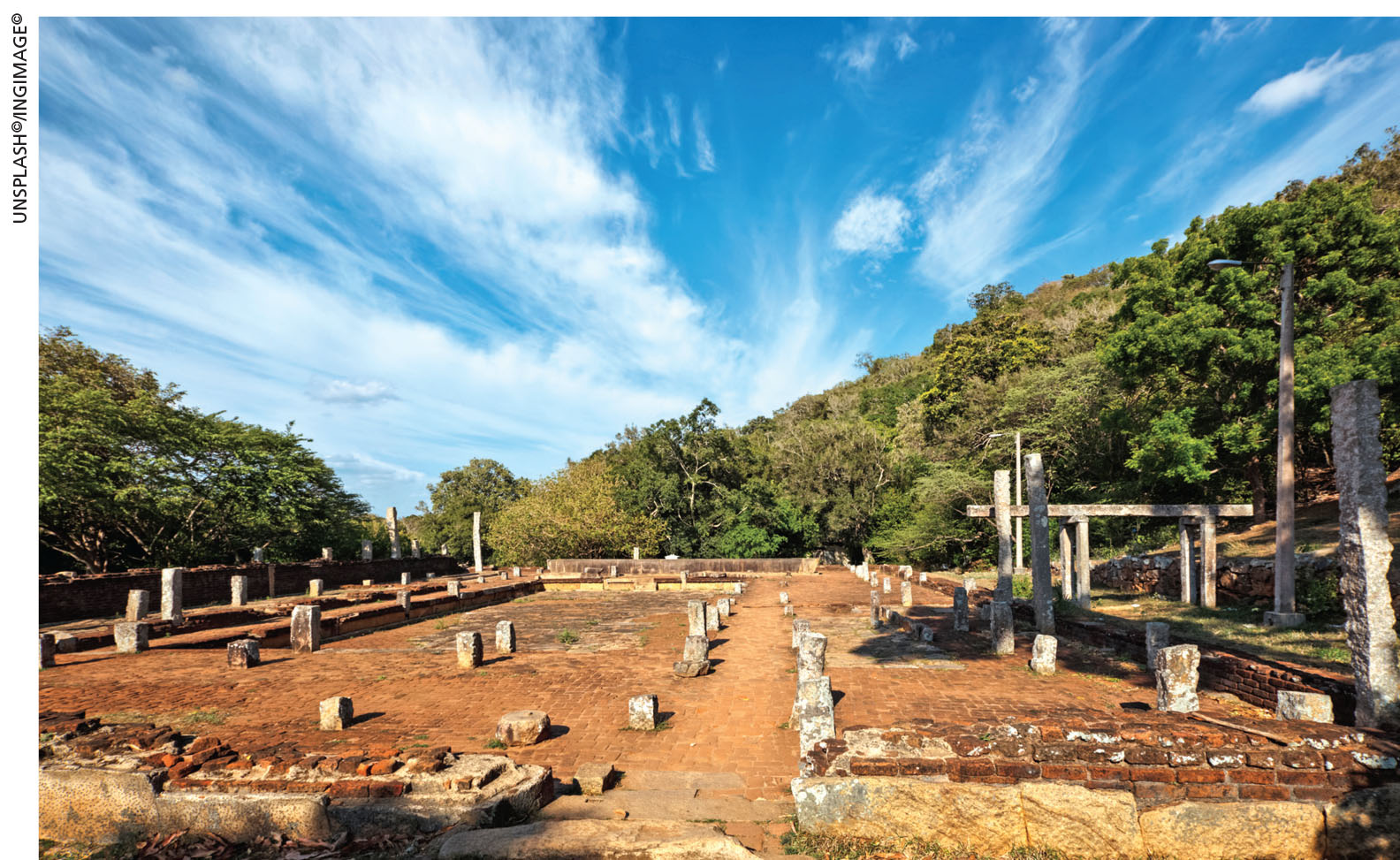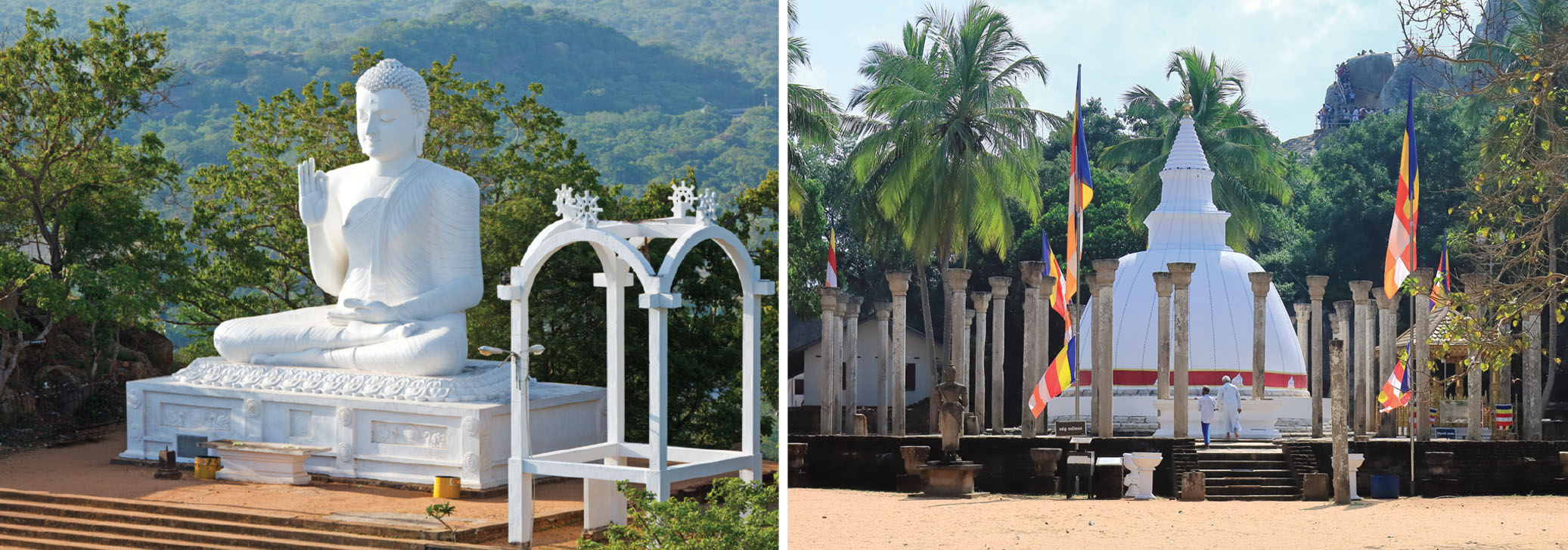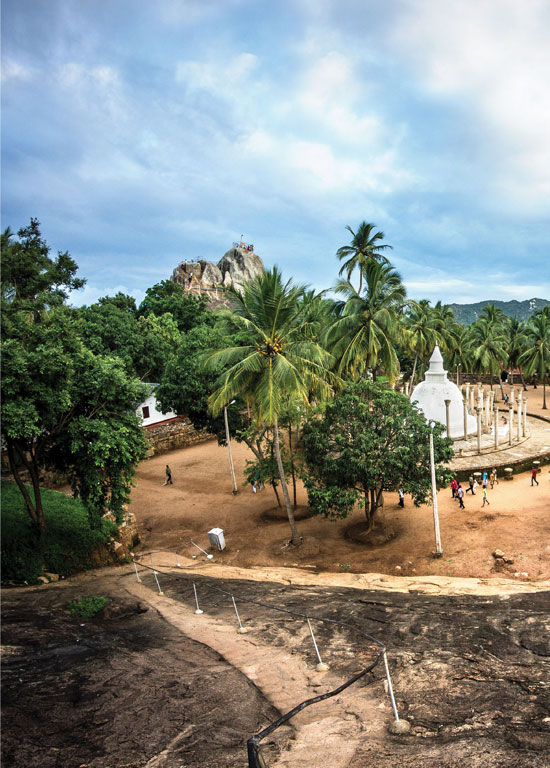SO SRI LANKA
HOLY PEAK
Sacred mount of Mihintale
Ruwandi Perera finds peace and tranquillity as she covers holy ground
You might have missed Poson Poya by a month but that’s no reason not to visit one of Sri Lanka’s most sacred places – even in July.
Mihintale is renowned for its prominence as the place where Buddhism first took root in Sri Lanka. In Sinhala, Mihin-thalé means ‘plateau of Mihindu.’ It’s said to be where Arahat Mahinda encountered King Devanampiya Tissa and asked him not to kill the deer he was hunting with his bow and arrow.
It was on this rock plateau that arguably the island’s richest culture and most treasured traditions (that have extended beyond philosophy and religion, and into politics, economics, arts and crafts) were founded.
Situated over 200 kilometres away from Colombo and less than 20 kilometres from the ‘sacred city’ of Anuradhapura, Mihintale is not what you would call a touristy area. A holiday here, be it on pilgrimage or not – while being relaxing and rejuvenating in a spiritual sense – is best embarked upon with a sense of reverence.
Instead of your usual shorts and shades, pack some modest white clothes, plenty of sunscreen and a shawl instead of a hat for protection from the scorching sun.
While accommodation options may not be as extensive as in other popular locations around the island, there are some decent hotels, bungalows and holiday homes, which you can select from and pre-book.
Given its green fields, stunning hills, sprawling lakes and of course, the famous Mihintale mountain peak, this sacred locale is for anyone with an eye for beauty and a curiosity for culture – no matter what religion or philosophy one may espouse.
Fact File
UP 1,840 STEPS Venerated as the birthplace of Buddhism in Sri Lanka, Mihintale is where the historic encounter between subcontinental missionary Arahat Mahinda and the island’s sovereign King Devanampiya Tissa took place in 247 BC. Today, it’s a temple complex comprising beautiful stupas, shrines and caves. During most parts of the year white robed devotees climb the historic 1,840 steps to the summit. It may not be a leisurely walk but it’s definitely a journey that (quite literally) takes your breath away.
ANCIENT HEALING Assumed to be the oldest hospital in the world, the Vejja Sala sits at the base of Mihintale and predates its European counterparts by a millennium or more, going back as it does to the 3rd century AD. Be awed by the complex’s ornately carved walls and pillars, second only to the stone baths sculpted from a single rock – large enough for ancient physicians to immerse people in herbal oils without spilling a drop. As if the place itself wasn’t healing enough to mind and soul, this hospital is said to have employed advanced medical practices. Antique grinding stones and medicine jars have been found here, pointing to a self-sustained establishment.
DARK DEEP WATER Treat your eyes to water that is dark, deep and still – like a mirror from ancient times reflecting its ageless memories. The Kaludiya Pokuna (‘black water pool’), which is a man-made lake, lies testimony to the hydraulic technology that existed in the days of our kings. Supplying water to the adjoining monastery, the large pond contains some ruins including those of artificial moats and bathhouses. However, its most impressive feature is the cave located underneath a slanting boulder that overlooks the pond. Visit the place after your trek up Mihintale, and feel your aches and pains disappear.
SOVEREIGN LAKE The Mahakanadarawa Wewa is located about three kilometres from Mihintale Junction off Anuradhapura. Constructed by King Mahasen of Anuradhapura and maintained by several of Sri Lanka’s great sovereigns such as Sena II of Anuradhapura, and Vijayabahu I and Parakramabahu I (both of Polonnaruwa), the lake is of great importance historically and economically. This large expanse of water, whilst nourishing farming communities in the area, provides impressive views of Mihintale’s peak and is frequented by wild animals such as elephants, deer, wild boar and water birds. It is also the bosom of the Mahakanadarawa wildlife sanctuary, which is one of the island’s earliest reserves; but it has suffered due to neglect.
PILGRIMAGE CITY You must visit the sacred city of Anuradhapura. But don’t try to cover everything in one go since it can be quite exhausting considering how much historic splendour the city has to offer. For the ambitious visitor or religious traveller nevertheless, making the Atamasthana pilgrimage – covering the eight sacred places: Jaya Sri Maha Bodhiya, Ruwanweli-saya, Thuparamaya, Lovamahapaya, Abhayagiri Dagaba, Jetavanarama, Mirisaveti Stupa and Lankarama – is a no-brainer. Each location provides solace and brings peace to the soul.





